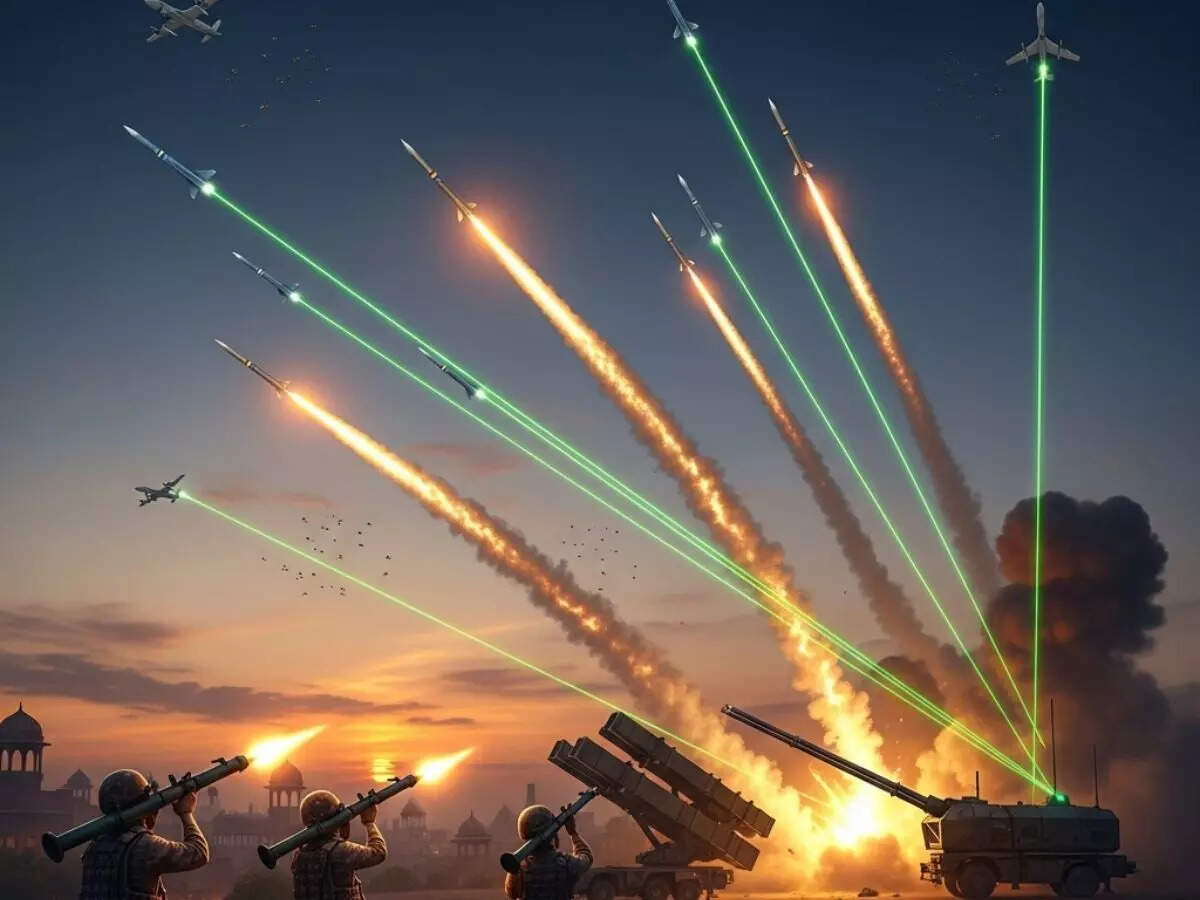
India will begin testing a new generation of interceptor missiles next year under Project Kusha, a central pillar of Mission Sudarshan Chakra (MSC). Prime Minister Narendra Modi announced the mission earlier this month, aiming to build a nationwide defence shield for critical civilian and strategic sites by 2035.
As told to TOI, senior officials, said that the M1 interceptor, designed to engage enemy aircraft, drones, cruise missiles and precision-guided munitions at a range of 150 km, will be tested in 2026. The M2, with a 250 km range, will follow in 2027, and the M3, capable of intercepting at 350 km, will be trialed in 2028. The Defence Research and Development Organisation (DRDO) plans to complete all three by 2028, opening the way for induction from 2030.
The aim is to complete the development of these three long-range surface-to-air missiles (LR-SAMs) and related systems under Project Kusha by 2028 to, hopefully, pave the way for their induction from 2030 onwards, the sources added.
This long-range surface-to-air missile system will be fully automated and comparable to the Russian-made S-400 Triumf, which is already deployed in limited numbers with the Indian Air Force.
Echoes of Iron Dome
The Indian plan has drawn comparisons with Israel’s Iron Dome and the proposed American Golden Dome. The Iron Dome protects a small area and is designed for short-range threats, while the Golden Dome, still under development, is expected to intercept missiles even in space at an estimated cost of 500 billion dollars over 20 years.Chief of Defence Staff General Anil Chauhan, speaking at the Ran Samwad conclave in Mhow, said he was confident India could build its own version. “I think it will entail the development of robust infrastructure and processes for the detection, acquisition, and neutralisation of the enemy’s air vectors, including the use of soft kills and hard kills, both kinetic and direct energy weapons,” he said.
He added, “It will act both as a shield and sword,” echoing the Prime Minister’s statement that the shield must not only defend but also “launch counter-strikes to hit the adversary many times more”.
Expanding missile capability
Mission Sudarshan Chakra will be supported by India’s growing missile arsenal. The Defence Ministry has already confirmed work on expanding conventional systems such as the Pralay ballistic missile with a 500 km strike range, the BrahMos cruise missile now upgraded from 450 km to 800 km, and land-attack cruise missiles capable of reaching 1,000 km.
The project also builds on India’s ballistic missile defence (BMD) programme. Phase I, designed to destroy missiles up to 2,000 km away, is operational. Last year, DRDO successfully tested a Phase II endo-atmospheric interceptor missile, demonstrating the ability to neutralise hostile nuclear-capable missiles in the 5,000 km class.
Integrated weapon tests
On 23 August, DRDO carried out the maiden flight test of the Integrated Air Defence Weapon System (IADWS) off the Odisha coast. The trial included Quick Reaction Surface-to-Air Missiles (QRSAM) with a 30 km range, Very Short Range Air Defence Systems (VSHORADS) with a 6 km range, and a 30-kilowatt laser-based Directed Energy Weapon (DEW) with a 3.5 km reach.
The Ministry of Defence said three different aerial targets, including high-speed unmanned vehicles and a multi-copter drone, were simultaneously destroyed. The system, it added, was coordinated through a Centralised Command and Control Centre developed by the Defence Research and Development Laboratory.
Defence Minister Rajnath Singh congratulated the teams, saying the test had “established the multi-layered air-defence capability of the country and is going to strengthen area defence for important facilities against enemy aerial threats”. DRDO chairman Dr Samir V Kamat also praised the scientists involved.
What integration will require
General Chauhan has underlined the scale of the challenge. He said a “colossal amount of integration” will be needed across land, air, maritime, undersea and space sensors to create a fused picture of threats. This includes multi-domain ISR (intelligence, surveillance and reconnaissance), reliable command and control posts, and real-time coordination between weapons.
Officials familiar with the project acknowledged the difficulty. One source noted, “Many of the building blocks for the MSC defence shield have either been developed or are being developed. The real challenge will be to integrate them all. It will cost a lot of money for a large country like India.”
Mission Sudarshan Chakra is expected to combine surveillance, cybersecurity, and layered air defence. It will be integrated with the Air Force’s Integrated Air Command and Control System and the Army’s Akashteer network. Private industry is also expected to play a role.
The name itself is drawn from the discus weapon of Lord Vishnu, underlining the intent to combine protection with precision strike. The government has described the mission as a milestone that will make “national security impregnable and enable targeted strikes against adversaries”.
The road ahead involves technology, money and time. But by 2035, India hopes to field one of the most comprehensive defence shields in the world.

